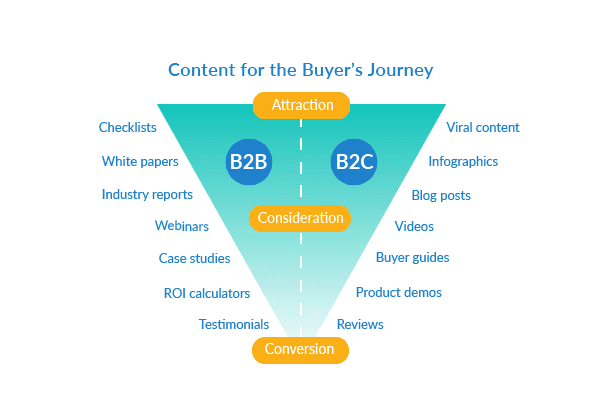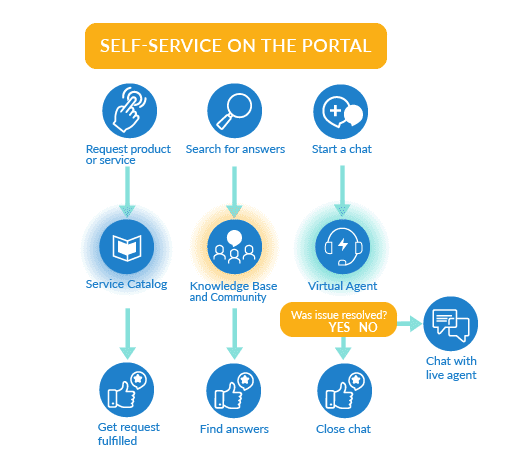3 Pillars of a Powerful B2B Ecommerce Experience
Engaging Digital Experiences are Key to B2B Commerce Success
Gartner predicts that “by 2025, 80% of B2B sales interactions between suppliers and buyers will occur in digital channels” (Gartner Future of Sales 2025). With increasing numbers of online buyers expecting enhanced ecommerce capabilities, they are no longer nice-to-haves but table stakes for B2B success. However, Gartner reports that 64% of surveyed customers cannot tell the difference between one B2B brand’s digital experience and another’s.
Your business’s ability to deliver a predictive, personalized, and engaging digital experience will be your competitive advantage. But B2B companies typically encounter unique challenges and complexities in their existing systems, making it harder to deliver a B2C-like ecommerce experience that customers are accustomed to. Combining the wealth of knowledge available internally, such as generated by employees, as well as externally by customers can go a long way to drive an enriched experience.
So how can you enrich your B2B ecommerce experience to support business goals and exceed customer expectations? Here are 3 critical pillars to consider when evaluating or improving such platforms.
#1 Empathy
“As the consumer shopping experience moves to a model that cuts out salespeople, B2B sellers must adjust by bringing insights and expertise into the sales process.” – Seleste Lunsford, Managing Director CSO Insights
An empathetic experience is, in fact, required across the entire B2B journey from pre-purchase through post-purchase. An important aspect of an empathetic experience is relevancy aligned to the specific B2B user’s goal. That goal may be a research goal (pre-purchase), a purchasing goal, or a service goal (post-purchase).
Research Goals
To fulfill research goals of your buyers, comprehensiveness and alignment of information to help the buyer make a decision is key. This also includes representing the correct type and format of the information. Specifications, Compatibility, Product Literature, Forums, Videos, and Topic specific content include common forms of information important to buyers in the pre-purchase phase. Ensuring your customer experience is very information rich and relevant also helps drive acquisition (SEO) and engagement through channels such as search engines.

Purchasing Goals
Accuracy and conformance of product to the buyer’s goal is critical. There is little tolerance for inaccuracy in B2B as an incorrect order can result in significant downstream impacts such as halting a business process if and the business itself. A deep level of attribution that exposes all the specific parameters of your products can be used to provide the buyer with all the tools and resources they need to confirm conformance and compatibility with their organizations needs. Common B2B ecommerce platform functions leveraging attributes to reduce error rates include guided selling/product finders, facet/filtering, configurators/CPQ, and more recently chatbots.
Today’s technology can automatically detect and prioritize attributes important to a specific buyer’s goals adding ease to their decision process. For buyers, that means alignment to their context such as industry or trade, organization, and application or usage for the specific product. Ensuring product information, such as availability and price, are as recent as possible to ensure no hiccups occur along the conversion path once the buyer has made their decision.
Service Goals
Post-purchase experiences include providing both ongoing information, such as product and purchase updates, self-service capabilities, and a bridge to customer service. Common end-user goals in service and support include timely and empathetic responses for issues, availability of relevant information to support the adoption and usage of products procured, and self service tools. Presenting relevant information in the form of product support, knowledge bases, product updates, recalls, user groups, and content while incorporating the context of the buyer’s and their organization as well as their purchase history is key.
Replenishment is a common reason behind a buyer visit, therefore an experience based on the buyer’s and/or organization specific purchase history would be more effective in those scenarios. The delivery of this information would include within the B2B ecommerce platform itself, a service portal, chatbots and email. Interconnecting the service interactions also provides valuable insights into the usage of your products.
Finally the service channel can be treated as an additional source of insights for both of the end users of your products as well as the products themselves.

#2 Personalization
Personalization is an essential part of all productive commerce experiences today, including B2C and B2B. It is key to distinguish personalization for B2B being more effective when directed towards the buyer’s intent and goal vs. the buyer/shopper themselves as in B2C. As buyers are procuring products on behalf of and generally for a specific purpose, it is key to incorporate intent to target accordingly. Buyer intent can be extracted implicitly through their interactions such as search and clickstreams, or provided explicitly through engagement vehicles, such as forms, configurators, and guided workflows. Personalized B2B ecommerce experiences can be visualized in the following layers:

Unlike the manual, curated personalized approach of yesterday, we now have the benefit of AI based automations to drive this personalization. The layers portrayed not only an aspect of a personalized experience but also signal meta-data that would be used for machine learning models as training data to deliver these experiences.
Signals are tantamount to driving the personalized experiences expected by buyers today. The most common first step when embarking in AI-based personalization includes taking an inventory of what signals you have available today across all your systems both online and offline.
#3 Continuous
In most B2B organizations, buyers will interact across multiple touchpoints both digital (self service) and high touch (full service) across their purchase journey as well as customer lifetime. Connecting these touchpoints is critical in maintaining a continuous conversation with the buyer, thus reducing buyer friction. Experience reboots and cold starts result in lost sales and customers. Connecting channels also open the door to informing and contribute to the overall intelligence behind your experiences. For example, sales person interactions in the field, call center, or in a chat session should be used to inform what occurs within the ecommerce interactions for that customer as well as enriching the overall organizational intelligence of customers and products. Additional outcomes of a continuous experience include:
- Maintains state of experience regardless where it starts or ends
- Generates more data to use to enrich customer, product, and knowledge bases/graphs
- Enables deeper insights across the various touchpoints
- Continuously drives improvement in relevance across the board
The graphic below outlines common linkages and benefits that can be achieved through a connected and continuous experience:

Start with Understanding Each Customer and Their Digital Journey
As a first step, it is important to understand your customers first before charting out your digital strategy and technology stack to deliver personalized digital experiences. A powerful B2B ecommerce platform gives you the tool but will need to rely on domain-expertise and a deep understanding of your customers to be successful.
Improving the search function, recommending the right products and personalizing the purchasing experience are great ways to remove friction and make the B2B ecommerce experience delightfully easy for buyers. See how Lucidworks can help you along this journey, connect with us.